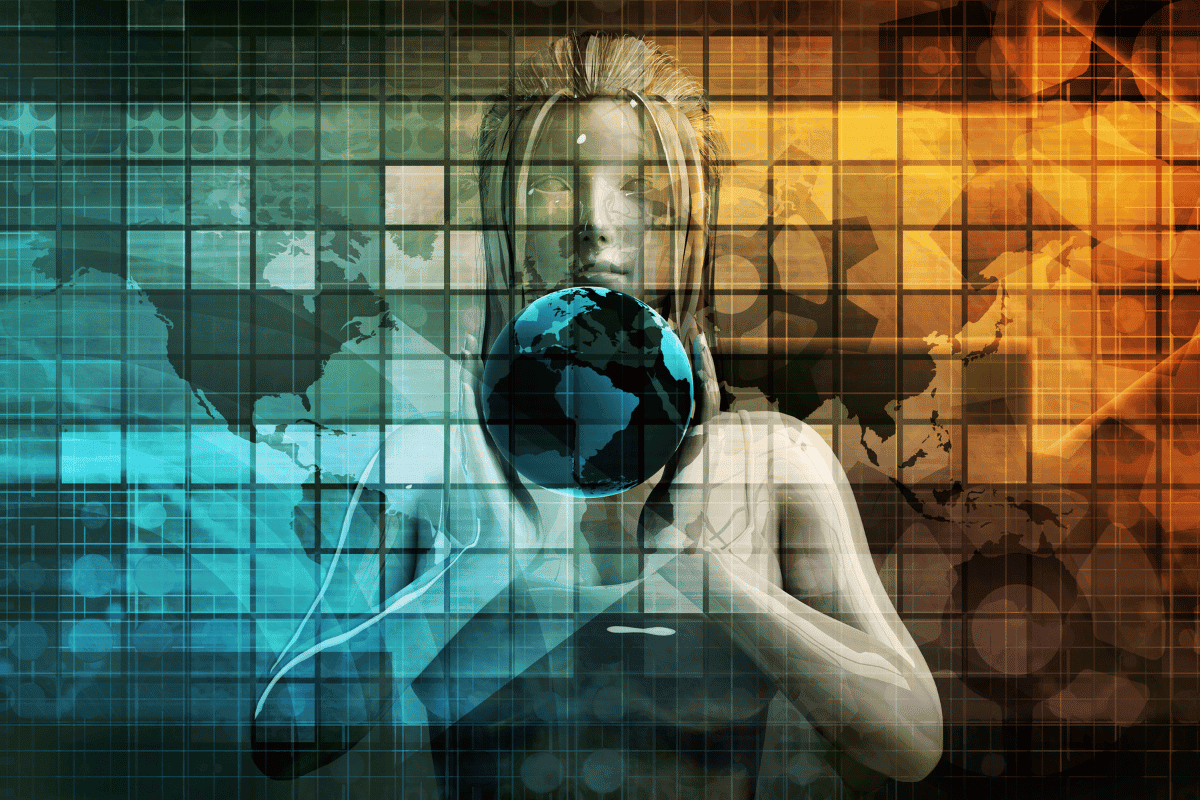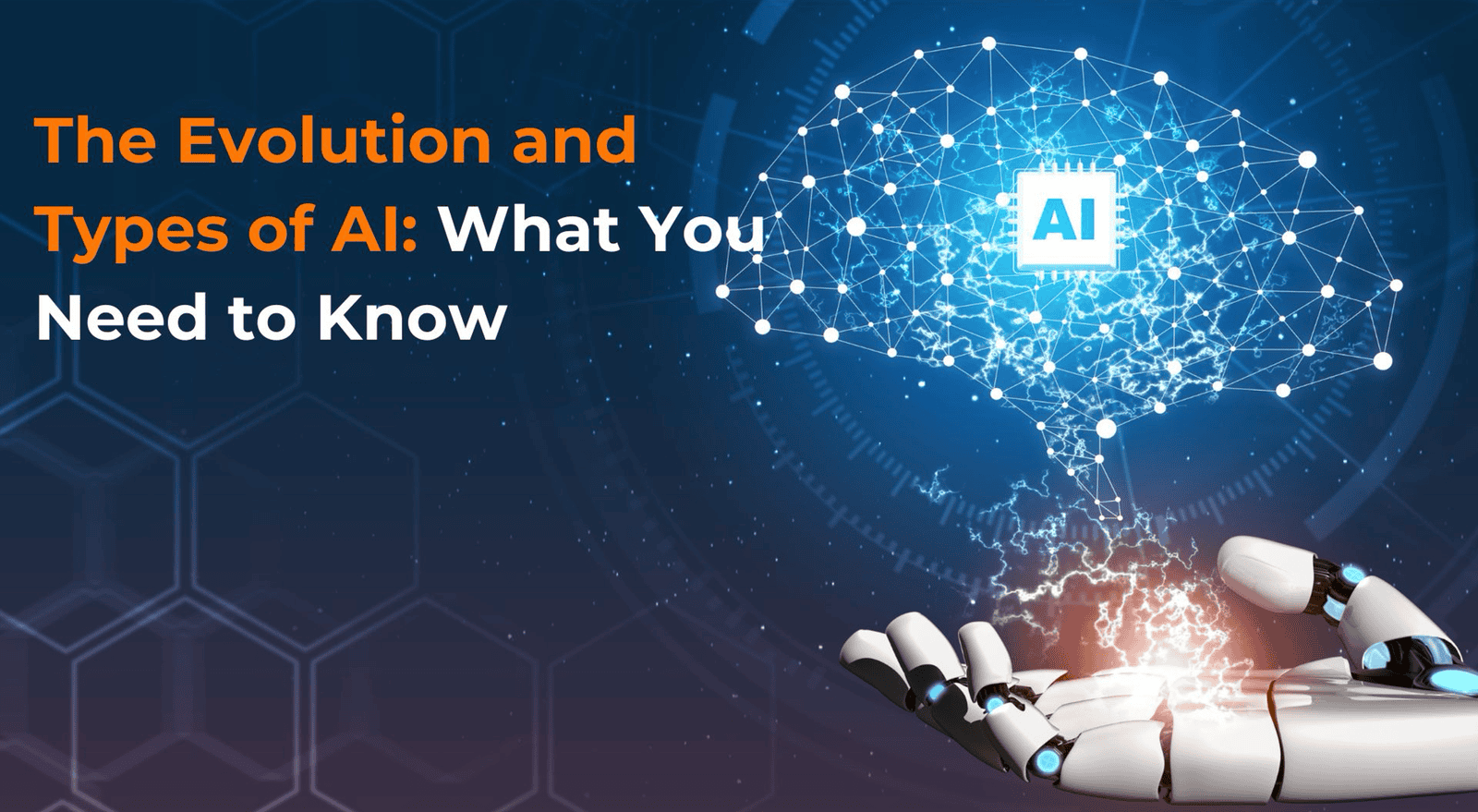The Evolution and Types of AI: What You Need to Know
Artificial intelligence is a rapidly expanding field that impacts many businesses and our daily lives. Its endless applications range from virtual assistants like Siri and Alexa to predictive systems for medical diagnosis and vehicle operation. However, not all artificial intelligence is equal; each type has unique capabilities, advantages, and disadvantages. We’ll discuss these variations along with some examples to see how they work to shape our reality.
What is AI?
It refers to machines built to think and act like humans. They should be capable of learning independently without human intervention to become more skilled based on past experiences, whether successful or not. Such tasks may include problem-solving, decision-making, language understanding, or sensory perception, which need only human minds for their completion. However, all these can now be done by machines through programming codes called algorithms that make up artificial intelligence systems.
Classification of Artificial Intelligence Based on Capabilities
According to capabilities, AI can be broadly classified into narrow AI and General AI. These subcategories can be further broken down into types according to their specific features or applications.
1. Narrow AI (Weak AI)
Narrow Artificial Intelligence, or Weak Artificial Intelligence, is programmed or trained only for specific tasks. Compared to humans, who have broad-based knowledge across various fields, narrow AIs work within prescribed limits by developers, meaning they cannot do anything outside their remit. Most widely used systems today fall into this category.
Examples of Narrow AI:
- Virtual Assistants: Apple’s Siri, Amazon’s Alexa, and Google Assistant, fall under this category because they can set reminders, answer questions, control smart home appliances, etc.- all powered by artificial intelligence.
- Recommendation Systems: Netflix and YouTube use AI to recommend movies or films based on users’ previous likes. Similar products, like Amazon, also have an artificial intelligence system that suggests different products depending on customers’ behavior.
- Image Recognition Systems: Social media platforms, surveillance apps for security purposes, or even photo-managing applications might use such systems as part of their features to identify and sort images according to specific criteria defined by the developers behind them.
- Chatbots: Chatbots are online platforms where people can communicate with robots capable of understanding and giving human-like replies, thus providing customer service, among other things.
2. General AI (Strong AI)
Artificial general intelligence is a system that can perform any intellectual task that a human being can do. Such systems have cognitive abilities in general, and they can learn, understand, and apply knowledge over various domains without human assistance.
Characteristics of General AI:
- Adaptability: They should be able to adapt themselves to new tasks and environments without additional programming
- Learning and Reasoning: By logical reasoning and learning from past experiences, it must be capable of solving complex problems.
- Consciousness: Although these systems do not yet exist, there is hope that one day, they will show signs of self-awareness and consciousness.
3. Superintelligent AI
Artificial Superintelligences (ASIs) are beyond human understanding in domains such as creativity, problem-solving, and judgment. The possible existence of these types of AIs has been the subject of much speculation, where there is much debate about their potential.
Capabilities of Superintelligent AI:
- Superior Problem-Solving: ASI can deal with complicated problems beyond the comprehension levels of humans.
- Innovative Thinking: It could generate new ideas at an unprecedented rate, leading to new technological breakthroughs.
- Global Impact: ASIs may be more globally effective than human poverty eradication drives or anti-climate change measures.
Classification of AI Based on Functionalities
AI may further be divided into Reactive Machines, Limited Memory, Theory of Mind, and Self-aware AI according to their functions:
Reactive Machines
These are the most basic AI systems where reactive machines that utilize only present data and do not use previous experiences to guide their decision-making process. They follow hard-coded rules programmed for specific tasks and lack memory-based functionality.
Example: IBM’s Deep Blue
- Deep Blue: Is an IBM-designed chess-playing computer—can be an excellent example of a reactive machine. Although it was able to analyze millions of possible moves ahead and predict responses by its adversary, it did need similar games from which they could learn something about them.
Limited Memory
Unlike reactive machines, AI systems with limited memory can store past experiences and use them for decision-making. These are more advanced systems since they involve history analysis, which is commonly done in many application areas.
Example: Self-driving Cars
- Self-driving Cars: Autonomous vehicles use limited memory AI to analyze information from different sensors and cameras and past driving experience to navigate through roads while avoiding obstacles safely.
Theory of Mind
AI has a theory of mind if it can understand emotions, beliefs, and intentions, among other psychological states. Such an AI system will have been designed with better interaction capabilities with people, thereby appearing more natural or humane.
Example: Emotionally Intelligent Robots
- Emotionally Intelligent Robots: Therapeutic caregivers’ robots may recognize human emotions and respond accordingly, thus providing personalized care based on compassion.
Self-aware AI
At its highest level of development, self-aware AI becomes conscious about itself, and these systems understand their existence, including what goes on inside them, such as thoughts or emotions.
Example: Hypothetical Future AI
- Hypothetical Future AI: This still imagines a world that might one day come into being, where we would have machines as aware as humans, but that is science fiction for now.
Specific Applications of Different Types of AI
Specific industries show how each kind of AI can be applied in various ways, making it flexible with different impacts.
Narrow AI Applications
Healthcare
- Medical Diagnosis: These comprise systems viewing a patient’s information and medical images to identify diseases such as cancer and heart problems.
- Personalized Treatment: AI algorithms suggest personalized treatment regimens based on genetic makeup and health history, among other things.
Finance
- Fraud Detection: Artificial Intelligence algorithms detect anomalies and patterns in financial data, which lead to the identification of fraudulent transactions.
- Algorithmic Trading: Market data analysis informs high-frequency transactions through trading algorithms driven by artificial intelligence.
Retail
- Inventory Management: Anticipating demand and streamlining restocking processes helps AI-based systems maximize stock levels.
- Customer Personalization: AI systems analyze customer data to improve customer experiences and provide appropriate suggestions
General AI Applications
Robotics
- Versatile Robots: These robots perform various activities ranging from intricate industrial operations to domestic activities that may face new challenges in their work environment.
- Human-like Interactions: They can naturally chat with human beings like artificially intelligent robots, providing companionship, encouragement, or entertainment.
Education
- Personalized Learning: Artificial intelligence techniques can adapt instructional materials and delivery methods for each student individually to boost learning outcomes.
- Tutoring and Support: Students receive guidance from AGI-driven virtual tutors who can offer them the answers they need and act as mentors throughout their academic journey.
Healthcare
- Advanced Diagnostics: Through leveraging huge amounts of patient data plus medical knowledge, AGI can diagnose diseases with increased precision.
- Medical Research: Artificial intelligence speeds up medical research by generating new ideas, planning experiment strategies, and interpreting findings.
Superintelligent AI Applications
Global Problem Solving
- Climate Change: ASI helps develop cutting-edge renewable energy technology, effective carbon capture techniques, or creative means to mitigate the impacts of global warming.
- Eradication of Diseases: ASI could hasten the search for effective medicines and develop sustainable public health programs that would prevent outbreaks from happening in the future.
Economic Impact
- Economic Growth: Economic growth and productivity may rise, and new also industries can be created. Economies can grow through ASI-driven innovations.
- Job Transformation: By automating repetitive work, ASI might free up human labor so that they can engage in more innovative and strategic roles.
Scientific Advancements
- Space Exploration: ASI sculpts the limitlessness of the universe by designing highly advanced spaceships for complex missions.
- Fundamental Research: AI could make breakthroughs in physics, chemistry, and biology, leading to new scientific knowledge.
Ethical Considerations and Challenges
As AI continues to evolve and expand its capabilities, several ethical considerations and challenges must be addressed.
1. Bias and Fairness
As AI evolves into broader capabilities, it must handle ethical challenges of different kinds as they arise.
2. Privacy and Security
Many AI systems require large volumes of information, which raises concerns over privacy and security-related issues associated with data. Therefore, trust in any artificial intelligence technology must be based on protecting confidential materials from unauthorized persons who could use them for malicious purposes. Hence, this calls for safeguarding such classified things against intruders, not compromising individual rights or national security interests.
3. Job Displacement
One possible outcome of automating tasks using an AI system is that some people may lose their jobs, leading to personal hardships and economic disruptions within affected communities. Thus, addressing all these social effects arising from joblessness caused by automation driven by artificial intelligence technologies becomes necessary.
4. Control and Accountability
The greater autonomy exhibited by more advanced artificial intelligence systems demands that appropriate control mechanisms and accountability measures be established accordingly. Setting clear guidelines on how AI techs should be developed, deployed, and used can help prevent misuse and unintended consequences.
Conclusion
Artificial intelligence has many types with different capabilities and uses. There are narrow AIs that only do one thing well, but there are also general AIs that can think like humans and superintelligent ASIs that surpass all human thinking combined. But even as we continue integrating them into our daily lives or industries, it’s still essential to appreciate the various kinds of artificial intelligence, considering their potential benefits while at the same time tackling ethical dilemmas associated with this innovation. Such an understanding will enable us to utilize these inventions most effectively to better humanity in future societies characterized by fairness among people regardless of race or any other demographic feature.









